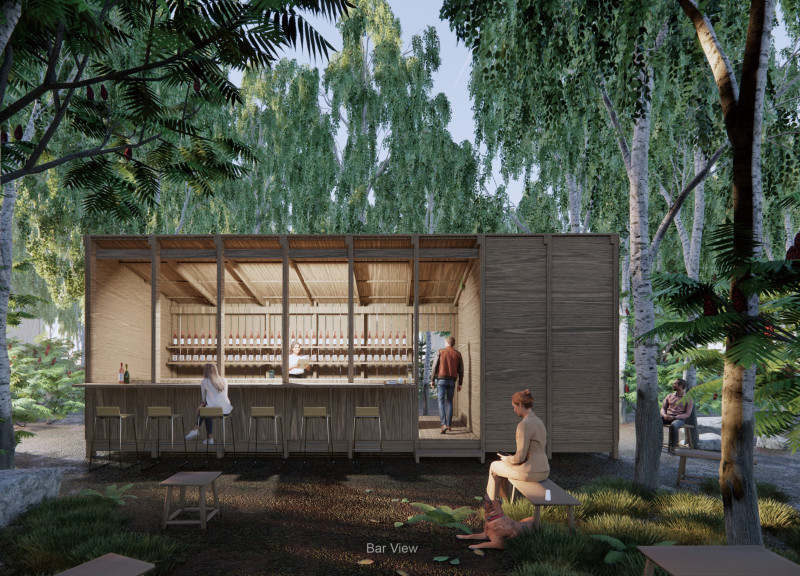5 key facts about this project
The primary function of the 3D Phonograph is to serve as a percussion stage that facilitates various types of performances. Unconventional in its design, it invites participants to engage with the space actively. Audience members are seamlessly incorporated into the performance experience, blurring the lines between spectator and performer. The integration of surrounding natural elements enhances the acoustics and further connects the venue to its environment, promoting a holistic experience.
Sustainability is a key element in the architectural details of the project. The materials used include locally sourced wood, glass, steel, and natural fabrics. The use of these materials not only supports ecological consciousness but also aligns the design with its natural surroundings. The circular seating configuration optimizes sightlines and acoustic performance, enabling attendees to enjoy a rich sound experience, while comfortable seating materials ensure prolonged enjoyment during performances.
Interactive sound panels are a distinctive feature of the 3D Phonograph project that sets it apart from traditional venues. These panels are designed to enable audience participation, allowing spectators to influence and create sound during performances. This kind of engagement introduces a novel layer of interactivity that enhances the experience.
In conclusion, the 3D Phonograph is a compelling example of how architectural design can evolve to meet new functional demands while respecting the environment. For those interested in architectural plans, sections, designs, and innovative ideas, exploring the project presentation will offer deeper insights into its design and functionality.


























